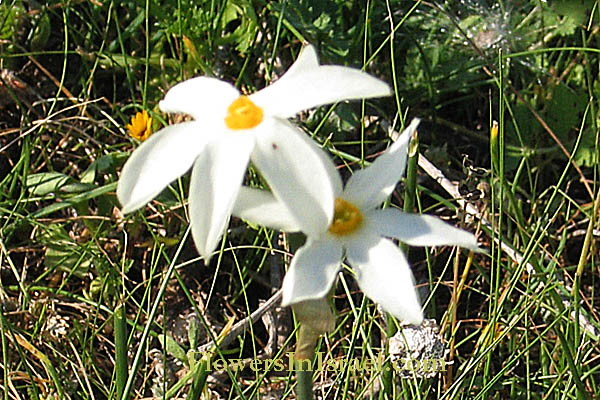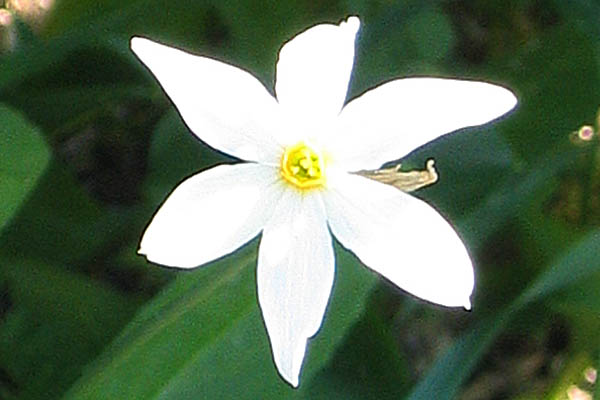Hebrew: נרקיס אפיל, Arabic: النرجس المتأخر
| Scientific name: | Narcissus serotinus L. | |
| Common name: | Late Narcissus | |
| Hebrew name: | נרקיס אפיל | |
| Arabic name: | النرجس المتأخر | |
| Family: | Amaryllidaceae, נרקיסיים |

|
| Life form: | Geophyte | |
| Stems: | 30-50 cm high | |
| Leaves: | 10-20 cm long, 1 mm wide, not present during anthesis; cylindrical, 1-2 on non-flowering bulbs; scape 10-25 cm, slender | |
| Inflorescence: | Solitary or in umbels of 2-3, erect, fragrant; spathe 15-35 mm; pedicel 7-20 mm | |
| Flowers: | White, orange; hypanthial tube (the ringlike, cup-shaped structure) 12-20 mm; perianth-segments oblong-lanceolate, white; corona, 6-lobed, orange | |
| Fruits / pods: | Capsule ellipsoid to subglobose | |
| Flowering Period: | November, December | |
| Habitat: | Humid habitats | |
| Distribution: | Mediterranean Woodlands and Shrublands | |
| Chorotype: | Mediterranean | |
| Summer shedding: | Ephemeral |

Derivation of the botanical name: Narcissus, Νάρκισσος, Greek, narkissos, narke "numbness", because of the plant's sedative effect. According to Greek mythology, Narcissus was a young man who loved no one. The gods made him fall in love with his own reflection in a pool of water. And since he could not embrace this watery image, he moped and brooded and pined away. Eventually he was transformed into a flower, a narcissus or daffodil. serotinus, sero, late, at a late hour; serotinus, late coming, late to leaf or flower. The Hebrew name: נרקיס, narkis, Narcissus; transliteration from the scientific name.
|